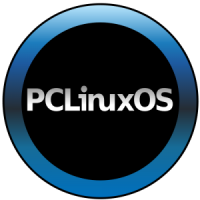“The two most important days in your life are the day you are born and the day you find out why.”
–Mark Twain
We’ve talked about this before.
A while back I was an observer during an extremely short span of time. An instant when a choice was going to be made and that decision was going to be life-changing. I want to share that specific moment with you, as well as how that one short space in time changed one person’s life forever.
 We learned a social rule early on in school. Those of us who were part of a Kindergarten curriculum were taught it when we were what…five or six years old?
We learned a social rule early on in school. Those of us who were part of a Kindergarten curriculum were taught it when we were what…five or six years old?
“Be nice to each other.”
It’s a simple thing really. Not as much of a rule as it is a tool for successful social interaction. Being a jerk or an aggressive asshat is only effective in the short-term. Continuous expression of said asshattery will eventually brand you as outside of the herd…the social herd as it were.
You can see it daily if you look for it. The jerk who isn’t invited for drinks and fun after work. The mouthy bully who ends up being the last one to go home because no one wants to help him finish up. I’ve also seen it in horrible circumstances. Nightmare circumstances where castigation from the group can be hot-metal-projectiles-ripping-into-your-body-and-rending-you-assunder deadly. I don’t want to specifically talk about it. Just look up the term “military frag” and you’ll understand.
Ken Starks is the founder of the Helios Project and Reglue, which for 20 years provided refurbished older computers running Linux to disadvantaged school kids, as well as providing digital help for senior citizens, in the Austin, Texas area. He was a columnist for FOSS Force from 2013-2016, and remains part of our family. Follow him on Twitter: @Reglue








 Until Fedora 21, the Fedora Project used to have a process for release names in which knock-down drag-out brawls would break out, rhetorically speaking, in the debate and community-wide voting for the name. Arguably, Fedora 17 “Beefy Miracle” wobbled the process from the rails, and while the rest of the names were noble — my favorite was Fedora 19 “Schrodinger’s Cat” — the formula was fairly simple: Names had to meet a “is-a” test. For example, “Schnozz is a ____, and so is Keister.” Taking the example of naming Fedora 14 “Laughlin,” the Fedora Project took the name of Fedora 13 “Goddard” and, though the miracle of the “is-a” test, had a list of candidates, of which Laughlin won. So the formula is as follows: “Robert H. Goddard was a professor of physics, and so was Robert Laughlin.” To see this in action, you can look at the
Until Fedora 21, the Fedora Project used to have a process for release names in which knock-down drag-out brawls would break out, rhetorically speaking, in the debate and community-wide voting for the name. Arguably, Fedora 17 “Beefy Miracle” wobbled the process from the rails, and while the rest of the names were noble — my favorite was Fedora 19 “Schrodinger’s Cat” — the formula was fairly simple: Names had to meet a “is-a” test. For example, “Schnozz is a ____, and so is Keister.” Taking the example of naming Fedora 14 “Laughlin,” the Fedora Project took the name of Fedora 13 “Goddard” and, though the miracle of the “is-a” test, had a list of candidates, of which Laughlin won. So the formula is as follows: “Robert H. Goddard was a professor of physics, and so was Robert Laughlin.” To see this in action, you can look at the 
 Reglue and our project before it,The HeliOS Project; has been a long-time user of Mint…and not for any other reason than it fits our needs. As my friend Eric Johnson says:
Reglue and our project before it,The HeliOS Project; has been a long-time user of Mint…and not for any other reason than it fits our needs. As my friend Eric Johnson says:
 While we in the States were dealing with family and turkey, the EU was busy working on preparing Google’s head for the platter. The European Parliament yesterday passed by a wide margin a non-binding resolution urging anti-trust regulators to break up the company. For those keeping score, the final vote was 384 yeas and 174 nays.
While we in the States were dealing with family and turkey, the EU was busy working on preparing Google’s head for the platter. The European Parliament yesterday passed by a wide margin a non-binding resolution urging anti-trust regulators to break up the company. For those keeping score, the final vote was 384 yeas and 174 nays.
 In comes a castoff ThinkPad T500 from a friend in Seattle and I’m now in the 64-bit club.
In comes a castoff ThinkPad T500 from a friend in Seattle and I’m now in the 64-bit club.